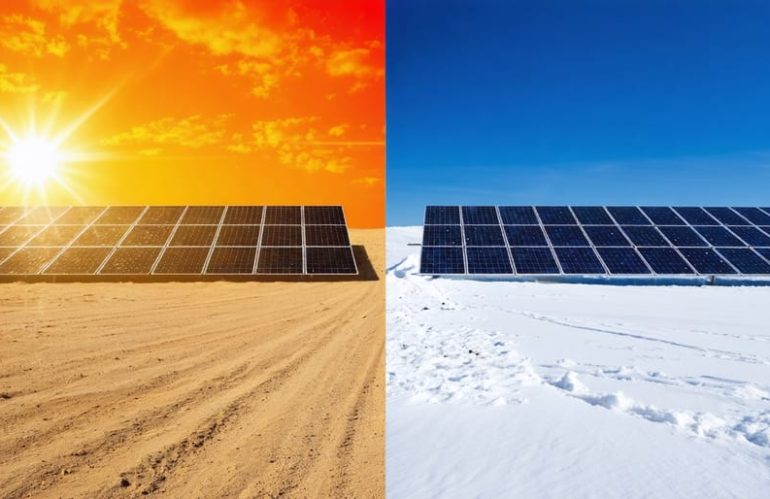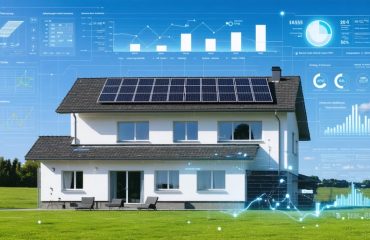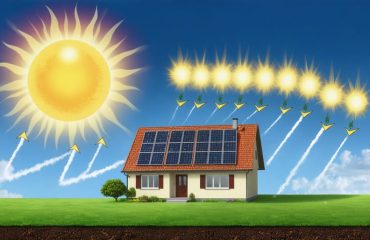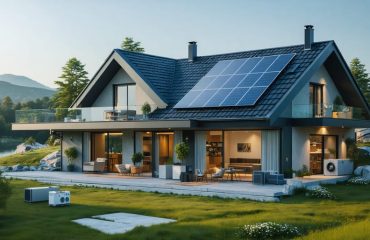The evolving landscape of solar technology has revolutionized how we approach sustainable energy, offering homeowners unprecedented opportunities to reduce their carbon footprint while saving money. Today’s environmentally conscious solar panels deliver more than just clean electricity – they represent a crucial step toward responsible energy consumption and environmental stewardship. By incorporating recycled materials, eliminating toxic components, and implementing cradle-to-grave sustainability practices, modern solar installations maximize the environmental benefits of solar energy while minimizing ecological impact.
Recent innovations in solar panel design have introduced biodegradable components, reduced water usage in manufacturing, and created panels that perform efficiently across diverse climate conditions. These advancements make sustainable solar solutions accessible to homeowners regardless of their location, while ensuring the technology’s environmental advantages extend beyond clean energy generation to encompass the entire product lifecycle – from production to eventual recycling.
As climate change concerns intensify, choosing eco-friendly solar panels represents a powerful individual action that combines environmental responsibility with practical energy independence. Understanding how these sustainable technologies work in different settings enables homeowners to make informed decisions that benefit both their households and the planet.
How Climate-Smart Solar Panels Protect Our Environment
Sustainable Materials Making a Difference
Modern solar panels are embracing sustainability like never before, with manufacturers using recycled materials and eco-friendly components throughout the production process. Recycled silicon from old electronics and solar panels now finds new life in fresh panels, significantly reducing electronic waste. The aluminum frames commonly use up to 80% recycled content, while the glass components incorporate recycled materials without compromising clarity or efficiency.
Leading manufacturers have also made substantial progress in eliminating toxic materials. Many panels now use lead-free solder and are completely free of cadmium, making them safer for both the environment and human health. The backing materials have evolved too, with bio-based plastics and recyclable polymers replacing traditional petroleum-based materials.
Perhaps most exciting is the development of organic photovoltaic materials, which use natural compounds to capture sunlight. These materials not only reduce the environmental impact of production but also make panels easier to recycle at the end of their life cycle. Even the packaging materials used to ship solar panels are increasingly made from recycled and biodegradable materials, ensuring sustainability at every step of the process.
Reduced Carbon Footprint Manufacturing
Modern solar panel manufacturers are making significant strides in reducing their carbon footprint during production. Many facilities now run on renewable energy themselves, creating a sustainable cycle where solar power produces more solar panels. Companies are implementing innovative recycling programs for production waste, with some achieving near-zero waste facilities.
Water conservation plays a crucial role, with advanced manufacturing processes using up to 90% less water compared to traditional methods. Manufacturers are also adopting closed-loop water systems, treating and reusing water multiple times throughout the production process.
The transportation impact is being addressed through localized manufacturing and strategic facility placement. Some manufacturers have established regional production hubs to reduce shipping distances and associated emissions. Additionally, eco-friendly packaging materials and efficient loading techniques help minimize transportation-related carbon emissions.
Smart factory automation and energy-efficient equipment have further reduced the environmental impact of solar panel production. These improvements, combined with sustainable material sourcing, mean that modern solar panels typically offset their manufacturing emissions within just 1-2 years of operation.
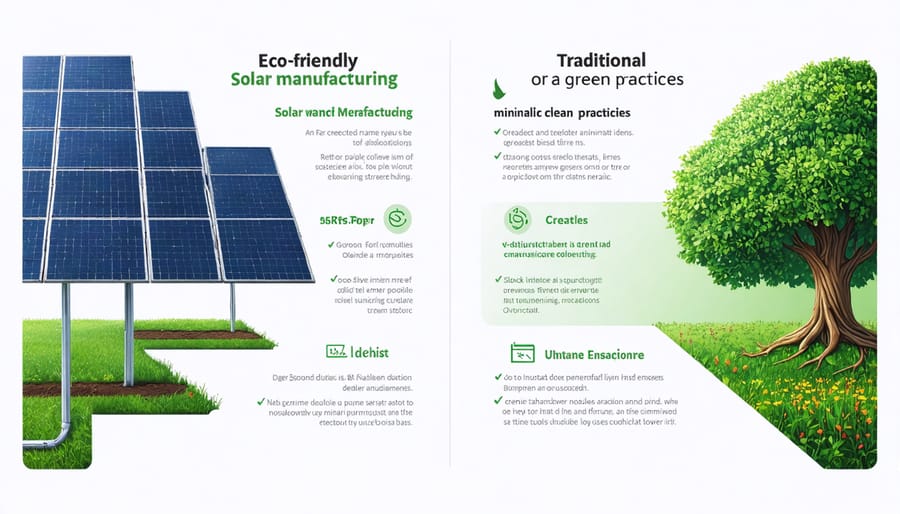
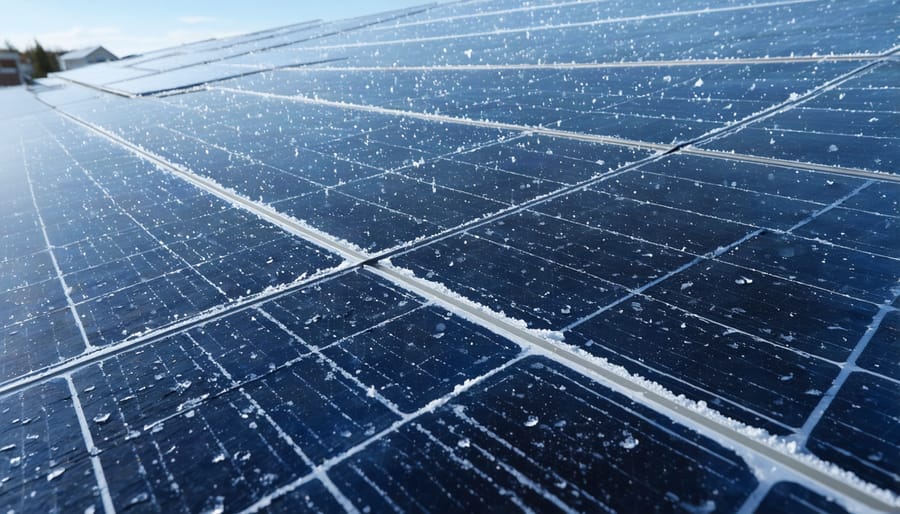
Adapting Solar Technology for Your Local Weather
Hot Climate Solutions
When it comes to optimal performance in high temperatures, modern solar panels have evolved significantly to meet the challenges of hot climates. Temperature-resistant backsheets and advanced frame designs help prevent heat-related degradation while maintaining efficiency. Many manufacturers now incorporate innovative cooling technologies, such as heat-dissipating materials and improved ventilation systems, to keep panels operating at their best even during scorching summer days.
White or light-colored backsheets reflect excess heat, reducing panel temperature by up to 20 degrees Fahrenheit compared to traditional dark materials. Some panels feature specialized glass coatings that minimize heat absorption while maximizing light capture. These improvements not only extend panel lifespan but also maintain consistent energy production throughout hot seasons.
Bifacial panels have gained popularity in hot climates, as they capture reflected light from both sides while allowing better airflow. This design naturally reduces heat buildup and increases overall efficiency. Smart mounting systems that create adequate air gaps between the roof and panels further enhance cooling effectiveness.
For areas with frequent dust and sand, self-cleaning glass treatments and optimized tilt angles help maintain clean surfaces without excessive water use. These features ensure sustained performance while minimizing maintenance needs in arid environments. Many manufacturers also offer extended warranties specifically designed for hot climate installations, providing additional peace of mind for homeowners in sunny regions.
Cold Weather Innovations
Modern solar technology has evolved significantly to tackle cold weather challenges, making solar power viable even in chilly climates. Innovative anti-snow coatings allow panels to shed snow more effectively, while advanced weather-resistant solar systems maintain performance during harsh winter conditions.
One breakthrough is the development of bifacial panels, which capture reflected light from snow-covered surfaces, actually increasing energy production in winter months. These panels work alongside smart heating elements that automatically activate when snow accumulation is detected, preventing energy loss from coverage.
Low-temperature optimized inverters now ensure efficient power conversion even when temperatures drop below freezing. Some systems incorporate special glass treatments that reduce ice formation and improve light absorption in cloudy conditions, common during winter months.
Manufacturers have also introduced frame designs that encourage natural snow sliding, reducing the need for manual cleaning. These frames are typically installed at steeper angles in snow-prone regions, maximizing both snow removal and sun exposure.
The latest cold-weather innovations include smart monitoring systems that alert homeowners to potential snow accumulation and automatically adjust panel positioning for optimal performance. These technologies, combined with improved insulation and cold-resistant wiring, ensure reliable green energy production year-round, even in the most challenging winter conditions.
Humid Climate Performance
Modern eco-friendly solar panels are designed with advanced moisture protection features that make them highly reliable even in humid environments. These panels incorporate specialized sealants and protective coatings made from non-toxic materials that effectively shield the internal components from moisture damage while maintaining their green credentials.
The latest moisture-resistant innovations include hydrophobic glass treatments that help water bead off naturally, reducing the buildup of dirt and organic matter. This self-cleaning feature not only maintains optimal performance but also reduces the need for chemical cleaners during maintenance. The junction boxes and connection points are now equipped with enhanced waterproof seals that use environmentally safe materials, ensuring long-term protection without harmful plastics.
Many manufacturers have also improved frame designs to prevent water accumulation and promote better drainage. These frames are typically made from recycled aluminum, which offers excellent corrosion resistance while supporting sustainable manufacturing practices. The backing sheets and encapsulation materials are engineered to withstand high humidity levels without degrading, often utilizing bio-based polymers that are both durable and environmentally responsible.
These moisture-resistant features typically extend the lifespan of solar panels in humid climates to 25-30 years, making them a sound long-term investment for homeowners in tropical and coastal regions. Regular visual inspections and gentle cleaning with water are usually sufficient to maintain their performance in humid conditions.
Maintenance That Preserves Both Panels and Planet
Green Cleaning Solutions
Keeping your solar panels clean doesn’t have to harm the environment. Simple, eco-friendly cleaning solutions can maintain optimal panel performance while protecting our ecosystem. A mixture of distilled water and biodegradable soap is highly effective for regular cleaning, avoiding harsh chemicals that could run off into soil or waterways.
For routine maintenance, soft brushes with natural bristles or microfiber cloths are ideal tools, as they prevent scratching while effectively removing dirt and debris. Many homeowners find that a simple spray of distilled water is sufficient for most cleanings, especially in areas with regular rainfall.
For stubborn spots, consider using white vinegar diluted with water in a 1:8 ratio. This natural solution effectively breaks down mineral deposits without leaving harmful residues. Baking soda mixed with water creates a gentle abrasive paste perfect for tackling bird droppings or tree sap without damaging the panel surface.
Time your cleaning sessions for early morning or evening when panels are cool to prevent water from evaporating too quickly and leaving residue. Always avoid cleaning during peak sunlight hours, as rapid evaporation can leave spots and reduce cleaning effectiveness.
Remember to collect and properly dispose of cleaning runoff to prevent any contamination of local water systems. Many eco-conscious homeowners also opt to collect rainwater for cleaning purposes, further reducing their environmental impact while maintaining their solar investment.

Sustainable Upkeep Practices
Maintaining your solar panels doesn’t have to harm the environment. In fact, many eco-friendly maintenance practices can extend the life of your panels while protecting our planet. Start by using rainwater collection systems to clean your panels, eliminating the need for treated tap water. When cleaning is necessary, opt for biodegradable, phosphate-free cleaning solutions that won’t harm local ecosystems.
Regular visual inspections can prevent major issues without requiring resource-intensive repairs. Schedule quarterly checks during dawn or dusk to avoid peak energy production hours and to easily spot any debris or damage. Remove leaves and other organic matter using soft brushes made from sustainable materials like bamboo or recycled plastics.
For winter maintenance, avoid harmful chemical de-icers. Instead, use heated water from your solar thermal system if available, or install automated snow-removal systems that work with gravity. Consider installing tilt mechanisms that allow panels to shed snow naturally, reducing the need for manual clearing.
Monitor your system’s performance through smart technology to detect issues early, preventing energy waste and reducing the need for replacement parts. When repairs are necessary, work with certified technicians who use recycled or environmentally friendly replacement components. Many companies now offer refurbished parts that perform just as well as new ones while reducing landfill waste.
Keep detailed maintenance records to optimize your cleaning schedule and avoid unnecessary water usage or cleaning product waste. This systematic approach ensures your panels remain efficient while minimizing their environmental impact throughout their lifetime.
Future-Proof Your Solar Investment
Investing in solar panels isn’t just about today’s benefits – it’s about securing a cleaner, more sustainable future. As technology continues to evolve, today’s environmentally friendly solar solutions are becoming increasingly efficient and eco-conscious. Understanding the elements of a high-performance solar system design is crucial for long-term success.
One of the most exciting developments is the emergence of recyclable solar panels. Manufacturers are now designing panels with end-of-life considerations in mind, using materials that can be easily separated and repurposed. This circular approach ensures that your investment won’t contribute to environmental waste decades down the line.
Smart monitoring systems are becoming standard features, allowing you to optimize your panel’s performance while minimizing resource waste. These systems can detect inefficiencies early, extending the life of your panels and maintaining peak performance levels. Many newer models also include self-cleaning technologies that reduce water usage during maintenance.
The durability of eco-friendly panels continues to improve, with many manufacturers now offering 25-30 year warranties. This longer lifespan means fewer replacements and less environmental impact over time. Additionally, advances in energy storage technology are making it easier to maximize your solar investment, with new batteries using more sustainable materials and offering improved capacity.
Looking ahead, breakthrough technologies like perovskite solar cells and bifacial panels promise even greater efficiency while using fewer raw materials. These innovations are already being integrated into newer panel designs, ensuring that today’s installations can be upgraded rather than replaced entirely.
By choosing environmentally friendly solar panels now, you’re not just making a smart financial decision – you’re investing in a technology that will continue to evolve and improve while maintaining its commitment to sustainability. The future of solar is bright, and today’s eco-conscious choices will pay dividends for years to come.
As we’ve explored throughout this article, environmentally friendly solar panels represent a crucial step toward a more sustainable future. By choosing eco-conscious solar solutions, homeowners can significantly reduce their carbon footprint while enjoying substantial energy savings. The advancement in sustainable manufacturing processes, recycling programs, and non-toxic materials has made solar power more environmentally responsible than ever before.
Remember that making environmentally sound choices doesn’t mean compromising on performance. Today’s eco-friendly panels are highly efficient and durable, offering the same reliable energy production as conventional options. Whether you live in a sunny desert climate or an area with variable weather, there’s an environmentally conscious solar solution that can meet your needs.
When considering solar installation, prioritize manufacturers who demonstrate commitment to sustainable practices and offer end-of-life recycling programs. Look for panels made with recyclable materials and produced using renewable energy. Regular maintenance using eco-friendly cleaning methods will ensure your system operates at peak efficiency while minimizing environmental impact.
By investing in environmentally friendly solar panels, you’re not just reducing your energy bills – you’re contributing to a cleaner planet for future generations. Take the time to research your options, consult with certified installers, and choose a system that aligns with both your energy needs and environmental values. The path to sustainable energy starts with informed, conscious choices about the technology we use to power our homes.

